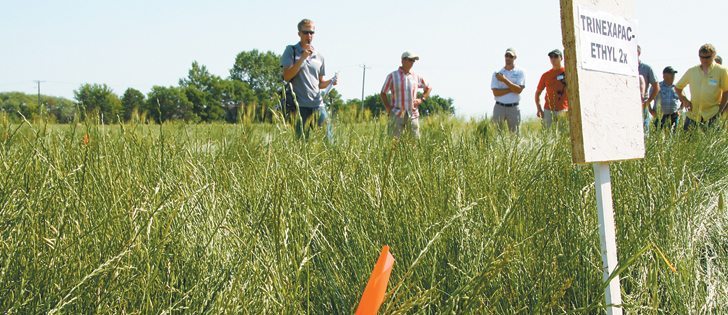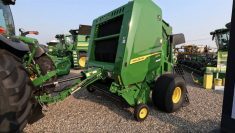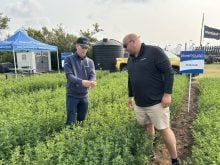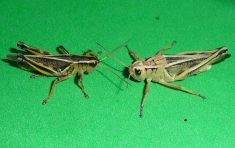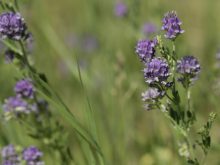STARBUCK, Man. — Manitoba forage seed growers hope a product will soon be registered in Canada that will potentially boost perennial ryegrass seed yields by 20 percent.
The Manitoba Forage Seed Association (MFSA) is testing the efficacy of a Syngenta plant growth regulator this summer on a plot near Starbuck.
Perennial ryegrass growers in Minnesota and Oregon use plant growth regulators to control the height of the plant, which prevents lodging and the yield losses associated with lodging.
However, growth regulators for perennial ryegrass aren’t registered in Canada, and the MFSA is holding trials to verify the efficacy and crop tolerance of the product.
Read Also

Soybean market still figuring out implications of China-U.S. pact
Soybean futures had a muted reaction to the U.S. trade deal with China as the market tries to figure out the nuances of the deal.
If all goes according to plan, the growth regulator may be registered by 2013, or more likely by 2014, said association administrator Heather McBey.
“We’re still working at trying to get it for next year,” McBey said during the association’s annual field tour, which began at Starbuck on a scorching day in the second week of July.
At the forage association’s plots north of Starbuck, MFSA research manager Kevin Gulay told a group of 40 producers and industry reps that plant growth regulators strengthen perennial ryegrass stands, which in turn increases yields because lodging is less likely to occur.
Gulay pointed to a strip of perennial ryegrass at the plot site that was treated with a Syngenta plant growth regulator.
The untreated plants had fallen over and lodged, while the treated ryegrass was upright.
Dave Grafstrom, a turf grass seed specialist and professor at Northland College in Roseau, Minnesota, said plant growth regulators increase the efficacy of pollination. In general, improved pollination is connected to improved yields.
“What the growth regulator does is reduce the height of the (plant)… and leads to better pollination,” he said, noting it reduces the length of nodes on the plant.
“If it lodges or falls down, you don’t get the pollination you want because the plant is laying down.”
Grafstrom said most perennial ryegrass seed producers in Minnesota treat their crops with a BASF plant growth regulator called Apogee.
It typically increases yield by 200 pounds per acre, or 15 to 20 percent.
Gulay said perennial ryegrass producers in Manitoba are interested in a Syngenta growth regulator that boosts yield, but cost will be the determining factor.
“It depends on the price point. That’s what everybody is asking.”
Syngenta has a plant growth regulator called Primo Max that is registered for golf course use in Canada. Golf course superintendents use it to establish thicker, healthier grass on fairways and tees and to reduce the amount of grass clippings produced every day.
Syngenta’s plant growth regulator for perennial ryegrass will likely be sold under a different name, Gulay said.
If it is registered, it will allow Manitoba ryegrass producers to keep pace with American growers, McBey said.
“Because they (plant growth regulators) are being used in the States, it creates an unlevel playing field so it’s hard to compete.”


